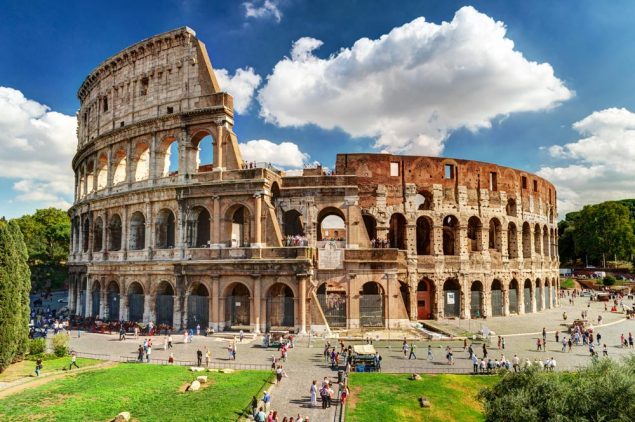
Repair work was set to start in December 2012 on the famous Colosseum, Rome’s very first all-stone amphitheater, which could possibly seat upwards of 50,000 viewers for its gladiatorial bouts, animal hunts and Christian sacrificial games. The project that concluded in mid-2015, consisted of the clean-up and remediation of the familiar arcaded façade, the development of a services center, and the reconstruction of various galleries and underground areas. What is more profound and need to be shown is the archeological evidence for the Colosseum being built with Second Temple treasures.
The Colosseum has actually been so called from approximately the 8th century A.D., in reference to a colossal statue of the infamous emperor Nero that stood close by. In fact, the initial name of the structure was the Flavian Amphitheater, after the emperors of the Flavian dynasty who constructed it in the late 1st century A.D. – Vespasian, Titus and Domitian. (The Jewish historian Flavius Josephus took the emperor’s family name when he came under the patronage of Vespasian.).

Archeological evidence reveals that a concealed inscription on the Colosseum itself indicates that the building and construction of the amphitheater was funded by the raided booty from the Jewish Revolt. Vespasian confronted a major deficit when he came to be emperor, however the spoils of war from Judea– the riches of the Second Temple treasury, the golden vessels from the Temple, the confiscated individual treasures of Jewish people and the sale of the Jewish slaves themselves, supplied massive wealth for the emperor and the plundering army commanded by his son Titus. For this reason did the conquest of Judea fund the most identifiable structure of imperial Rome.
The Lampadius inscription is very important due to the fact that it had actually been sculpted on a block that had a previous engraving made of bronze letters. These letters left holes in the marble and these holes were deciphered. It was discovered that the bronze engraving celebrated the initial dedication of the amphitheatre by Vespasian, with the confirmation that the Colosseum was constructed with the spoils of war and the plundering of the Temple of Jerusalem.

According to Josephus, the temple itself being covered on all sides with huge plates of gold, the sun was no sooner up when it radiated so intense a flash that people straining to take a look at it were forced to shield their eyes.
These very same plundered spoils of Judea are portrayed plainly on another monolith that still stands in Rome apart from the Colosseum, which is the focus of an interesting and fresh research. The marble Arch of Titus was constructed in 81 A.D. by the emperor Domitian to celebrate the victory and triumphal parade of his brother Titus, the conquering army general, and Emperor Vespasian’s son and successor. A current undertaking of the Yeshiva University Center for Israel Studies carried out a new research study of the primary relief panels on the arch, which reveal the triumphal parade of 71 A.D. and the deification of Titus.



In the most well-known of the panels, Roman soldiers carry the Jerusalem Temple spoils on parade, consisting of the menorah, the showbread table and trumpets, which were then stored in Rome’s Temple of Peace.
Professor Louis Feldman from the stated university likewise records an old tale that Jewish labor built the Colosseum. He believes that might have come from the Roman claim to have actually taken 97,000 Jewish captives in the revolt when the destruction of the second temple ended. This further strengthens the archeological evidence for the Colosseum being built with Second Temple treasures and human resources!